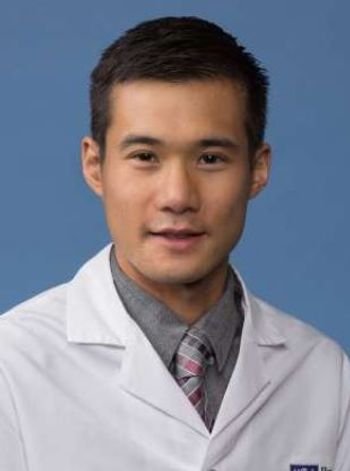
Osteoarthritis: Practical Nondrug Steps to Successful Therapy
The diagnosis of osteoarthritis (OA) is primarily clinical. Key historical clues to idiopathic OA include patient age greater than 45 years, joint pain that increases with activity and is relieved with rest, morning stiffness of 30 minutes duration or less, and involvement of one or more of the following: hips, knees, cervical or lumbar spine, basilar thumb joints, interphalangeal joints of the hands, midfoot joints, and first metatarsophalangeal joints.
For a disorder so common that it may deservedly be considered part of the human condition, osteoarthritis (OA) can be surprisingly complex and controversial. The array of therapeutic options-including educational, physical, pharmacologic, and surgical interventions-is vast.
To reflexively prescribe NSAIDs as the sole therapeutic approach to OA results in missed opportunities to improve patients' quality of life-and risks potentially significant adverse drug effects. Here, we focus on effective nondrug approaches. In the second part of our article (beginning on page 88), we discuss drug therapy and surgery.
OVERVIEW
OA affects more than 20 million Americans. The prevalence of radiographic OA is even higher; many patients who have typical radiographic findings are asymptomatic. For example, almost all persons aged 65 to 74 years have radiographic OA of the hands; one third of those aged 63 to 93 years have findings indicative of OA on knee radiographs.1
Most OA is idiopathic. Idiopathic, or primary, OA can be linked to:
Advancing age.
Obesity.
Occupational overloading of joints.
Familial type II collagen gene polymorphisms.2
In some patients OA is secondary. Secondary OA develops at varying intervals after trauma, infection, osteonecrosis, or congenital malalignment, or in the setting of inflammatory arthritis or metabolic disease (
In both primary and secondary OA, a variety of morphologic and biochemical changes affect the chondrocytes and collagen matrixof a joint. The changes result in fibrillation and denudation of articular cartilage, variable degrees of secondary inflammation, decreased synovial fluid viscosity, and altered joint biomechanics.3 These pathologic processes culminate in impaired joint function, pain, and reduced quality of life.
INITIAL EVALUATION
The joint pain caused by OA typically begins insidiously, worsens with use, and is improved by rest. In advanced disease, however, pain may develop during inactivity as well. While patients with OA may complain of morning stiffness, this usually lasts less than 30 minutes and is less intense than that reported in inflammatory arthropathies, such as rheumatoid arthritis.
The distribution of involved joints also distinguishes OA from other types of arthritis with similar symptoms. The joints most commonly involved in OA are the hips, knees, cervical spine, lumbar spine, first carpometacarpal (CMC) or basilar thumb joints, proximal and distal interphalangeal joints of the hands, midfoot joints, and first metatarsophalangeal joints (
A joint affected by OA may be minimally or not at all swollen. Swelling may reflect mild synovitis, bony enlargement, or-especially at the knee-joint effusion. Tenderness on direct palpation is characteristic, although this finding may be difficult to elicit at the hip. The skin overlying the joint may be slightly erythematous or warm. Consider a diagnosis other than OA, however, if erythema is intense. Crepitus is common, as are reduced passive and active ranges of motion; the latter result from pain and stiffness. Angular deformity may be evident in OA that has progressed.
Remember to carefully examine the hip of any patient who complains of knee pain; pain referred to the knee may be the only symptom of hip OA.
Also keep in mind that OA may not be the sole cause of a patient's joint pain. Be alert for comorbid conditions, such as bursitis, tendinitis, radiculopathy, peripheral nerve entrapment, and superimposed inflammatory arthritis.
DIAGNOSTIC STUDIES
The diagnosis of OA is primarily clinical. Findings in the history and physical examination are often sufficient to diagnose OA in the knees, spine, hands, and feet.4
Imaging studies. Radiographs are useful in the following settings:
To establish the diagnosis at the hip.
To assess disease severity at other joints.
To screen for other types of bone and joint pathology if pain is severe and disrupts sleep.
Radiographic hallmarks of OA are:
Asymmetric joint-space narrowing.
Osteophyte formation (
Subchondral sclerosis.
If a patient with neck or low back pain has symptoms in the extremities that suggest nerve root or spinal cord impingement, order an MRI scan of the cervical or lumbar spine to evaluate the possibility of spinal stenosis.
Synovial fluid evaluation. Synovial fluid from an osteoarthritic joint appears grossly clear and straw-colored; glucose level is normal, and nucleated cell count is less than 2000. Send fluid for analysis if it appears even slightly cloudy, rather than clear and yellow.
Laboratory tests. There are no practical specific laboratory markers for OA.
Diagnosing causes of secondary OA. If a patient is younger than 45 years or presents with atypical joint involvement, consider secondary causes of OA. Previous joint trauma, infection, or joint dysplasia do not alter the diagnostic approach. However, certain findings require special follow-up:
• Radiographic evidenceof osteonecrosis warrants a search for the cause.
• Associated inflammatory arthritis requires further laboratory evaluation and usually warrants referral to a rheumatologist.
• Involvement of the MCP joints-particularly when there is radiographic evidence of "beak-like osteophytes" at the second and thirdMCP joints-suggests calcium pyrophosphate deposition disease (CPDD). If CPDD is suspected and the serum calcium level is high or the phosphorus level is low,measure the parathyroid hormone level to detect underlying hyperparathyroidism.
• In addition, check liver function tests. If results of the latter are abnormal or if the patient is youngerthan 50 years old or has diabetes, cutaneous hyperpigmentation, hypogonadism, or a family history of liver disease, screen for hemochromatosis (measure the serum iron level and total iron binding capacity to determine transferrin saturation).
Other secondary causes of OA are rare and are usually obvious from the history or physical examination.
TREATMENT GOALS
The goals of OA management include:
Pain relief.
Optimal joint function.
Maximal overall quality of life.
Conventional approaches include education, physical therapy, drugs, and surgery. Algorithms I and II illustrate the role these different modalities play in the management of OA of the knee and hip, respectively.
NONDRUG THERAPY
Education. Educate patients about OA by means of counseling and/or literature. Education can empower patients, foster realistic expectations, and encourage compliance with a multidisciplinary treatment regimen. Web sites that are good patient information resources include those of the Arthritis Foundation (www.arthritis.org) and the American College of Rheumatology (www.rheumatology.org).
Physical modalities. Because they can significantly reduce pain and improve function with little or no risk, physical modalities are the cornerstone of OA management for all patients.
Thermal modalities. These include topical applications of heat or cold; the choice is dictated by the patient's preference. Local application of heat can be achieved by warm-water immersion, hot packs, or radiant heat and may help the joint to "loosen up" after periods of inactivity. Therapeutic ultrasound increases tissue warmth at levels deeper than those reached by a warm bath or hot pack and may therefore offer additional benefit, particularly for large joints. Although most patients with OA prefer heat, icing for 10 to 15 minutes can temporarily reduce pain and inflammation, particularly after periods of increased joint use.
Supportive devices. These can improve function by unloading or resting joints and reducing pain. For patients with OA of the hip or knee, a cane can provide symptomatic relief and greater mobility (although many patients resist use of a cane because of pride or vanity). Advise patients to use a cane in the hand contralateral to their symptomatic side. The top of the cane should be even with their wrist when they stand with their arm at their side.
A lateral-wedged insole can improve biomechanics and decrease pain in patients with varus deformity of the knee ("bowlegged"). Pads or rubber sleeves for the knee can reduce symptoms by generating increased warmth; however, these do not unload the joint. A knee brace can reduce the load on the joint.5
Splints can rest and protect affected small joints in the hands, especially the basilar thumb or first CMC joints; they can be worn daily or as needed. Metatarsal pads, orthotics, and shoes with wide toe boxes can alleviate foot pain associated with OA.
Therapeutic exercise. The 3 principal types of therapeutic exercise are:
• Strengthening.
• Flexibility (also called "stretching" or "range of motion").
• Aerobic (or cardiovascular).
Because hip and knee OA cause most OA-related disability, exercise is especially important for patients in whom these joints are affected.6,7
Isometric or isotonic exercises that strengthen the adjacent muscles help stabilize the joint.8 Some of the pain of OA may emanate from periarticular soft tissues (eg, muscles and tendons) that have lost flexibility and strength. Thus, appropriate stretching exercises can ameliorate symptoms and improve function.
Fitness walking, with speed and distance adjusted to prevent symptom worsening, can reduce pain and stiffness and improve function without causing progression of OA or damage to the joint.9 In some patients, involvement of the large weight-bearing joints precludes effective walking. These patients can benefit greatly from swimming or water aerobics.
Weight reduction. Even modest weight loss can significantly reduce joint loading, ameliorate symptoms, and slow disease progression in weight-bearing joints.
References:
REFERENCES:1. Lawrence RC, Helmick CG, Arnett FC, et al. Estimates of the prevalence of arthritis and selected musculoskeletal disorders in the United States. Arthritis Rheum. 1998;41:778-799.
2. Soloman L. Clinical features of osteoarthritis. In: Kelley WN, Harris ED, Ruddy S, Sledge CB, eds. Textbook of Rheumatology. Philadelphia: WB Saunders Company; 1997:1383-1393.
3. Mankin HJ, Brandt KD. Pathogenesis of osteoarthritis. In: Kelley WN, Harris ED, Ruddy S, Sledge CB, eds. Textbook of Rheumatology. Philadelphia: WB Saunders Company; 1997:1369-1382.
4. McAlindon T, Dieppe P. Osteoarthritis: definitions and criteria. Ann Rheum Dis. 1989;48:531-532.
5. Komistek RD, Scott RD, Dennis DA, et al. In vivo comparison of femorotibial contact positions for press-fit posterior stabilized and posterior cruciate- retaining total knee arthroplasties. J Arthroplasty. 2002;17:209-216.
6. Lane NE, Buckwalter JA. Exercise and osteoarthritis. Curr Opin Rheumatol. 1999;11:413-416.
7. van Baar ME, Assendelft WJ, Dekker J, et al. Effectiveness of exercise therapy in patients with os-teoarthritis of the hip or knee: a systematic review of randomized clinical trials. Arthritis Rheum. 1999;42: 1361-1369.
8. Minor MA.Exercise in the treatment of osteoarthritis. Rheum Dis Clin North Am. 1999;25:397-415.
9. Kovar PA, Allegrante JP, MacKenzie CR, et al. Supervised fitness walking in patients with osteoarthritis of the knee. A randomized, controlled trial. Ann Intern Med. 1992;116:529-534.
10. Hochberg MC, Altman RD, Brandt KD, et al. Guidelines for the medical management of osteoarthritis, II: osteoarthritis of the knee. Arthritis Rheum. 1995;38:1541-1546.
11. Lozada C, Altman R. Recent advances in the management of osteoarthritis. In: Kelley WN, Harris ED, Ruddy S, Sledge CB, eds. Textbook of Rheumatology. Philadelphia: WB Saunders Company; 1997:1-4.
12. Lane NE, Thompson JM. Management of osteoarthritis in the primary-care setting: an evidence-based approach to treatment. Am J Med. 1997;103: 25S-30S.
13. Manek NJ, Lane NE. Osteoarthritis: current concepts in diagnosis and management. Am Fam Physician. 2000;61:1795-1804.
14. Rehman Q, Lane NE. Getting control of osteoarthritis pain. An update on treatment options. Postgrad Med. 1999;106:127-134.
15. Schnitzer TJ. Osteoarthritis treatment update. Minimizing pain while limiting patient risk. Postgrad Med. 1993;93:89-92, 95.
16. Recommendations for the medical management of osteoarthritis of the hip and knee: 2000 update. Arthritis Rheum. 2000;43:1905-1915.
17. Hochberg MC, Altman RD, Brandt KD, et al. Guidelines for the medical management of osteoarthritis, I: osteoarthritis of the hip. Arthritis Rheum. 1995;38:1535-1540.
Newsletter
Enhance your clinical practice with the Patient Care newsletter, offering the latest evidence-based guidelines, diagnostic insights, and treatment strategies for primary care physicians.




















































































































































































































































































